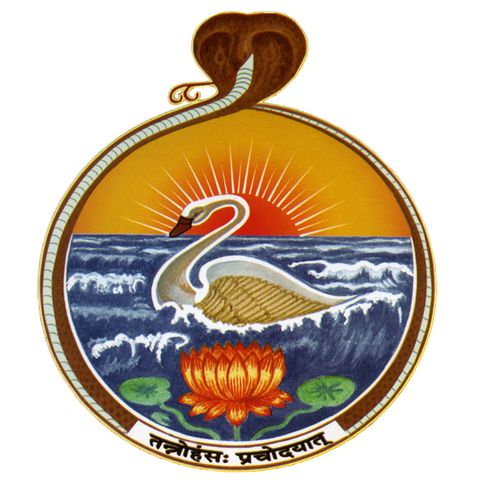87 - The All-Pervading Divine Reality | Swami Tattwamayananda

Download and listen anywhere
Download your favorite episodes and enjoy them, wherever you are! Sign up or log in now to access offline listening.
Description
-9th chapter: verses 6, 7, 8 -The lecture was given by Swami Tattwamayananda on June 18, 2021. -6th verse: “Just as the mighty, strong wind, that is always moving everywhere,...
show more-The lecture was given by Swami Tattwamayananda on June 18, 2021.
-6th verse: “Just as the mighty, strong wind, that is always moving everywhere, rests in the sky, but does not have the ability to make any modifications to the sky – similarly, all beings rest in Me.”
-According to the Upanishadic concept of evolution - from Atman, akasa evolves - from akasa, air evolves - from air, fire evolves - from fire, water evolves - from water, earth evolves - from earth, plants evolve - from plants, different living beings evolve.
-A tree is pervaded and sustained by its living liquid. If this liquid dries out, nothing can grow from the tree. Similarly, everything is pervaded and sustained by the Divine Reality.
-When a spiritual seeker worships an image, he first invokes and projects the all-pervading divine principle in that image. Over time, with spiritual practices, the inner divinity begins to manifest in his nature, which ultimately helps him to connect with his own divine nature.
-Yajnavalkya in a reply to Gargi in Brihadaranyaka Upanishad says that we can use the power of inference to understand this all-pervading divine principle. He says “At the command of that Reality, O Gargi, the sun and moon hold their courses; heaven and earth keep their positions; moments, hours, days and nights, fortnights and months, seasons and years–all follow their paths; rivers issuing from the snowy mountains flow on, some eastward, some westward, others in other directions.”
-7th verse: “At the end of a kalpa, all beings go back to My prakriti. At the beginning of the next cycle, manifestation starts again.”
-A kalpa is equal to one day and one night in the life of Brahma. An iceberg is not a creation – rather, it is just a projection of water. Similarly, the world is not a creation – rather, it is a projection, and not separate from its causal form. In the day of Brahma, projection starts. In the night, dissolution takes place, and it goes back into its causal form.
-Mundaka Upanishad gives three analogies of how creation emerges from Brahman. First, a spider weaves a web using material from its own body. Similarly, Brahman is the origin and dissolution of the universe. To illustrate that Brahman has no purpose behind the creation, the second analogy is provided – plants and trees emerge spontaneously from the Earth, which does not have a purpose. Similarly, Brahman is the essence of creation, with no purpose. To illustrate that Brahman is not an inert entity, the third analogy is provided – in a living, conscious person, hair and nails grow. Similarly, Brahman is the essence of consciousness.
-8th verse: “Animating My own prakriti, I project this whole multitude of different beings. Then they exist, but they are helpless and not free.”
-So long as we are attached to prakriti, under the influence of the three gunas, we are in a state of helplessness, and we are not free – we are slaves in the hands of our own samskaras. We begin our quest for spiritual freedom when we become aware of this absence of freedom. Buddha started his spiritual quest after becoming aware of the helplessness of all beings against old age, sickness, and death.
-When we realize that there is no real freedom at the empirical level, we look for a different, higher form of freedom. Until we realize our true spiritual identity, we are under the control of prakriti.
-According to Vedanta, every attempt to solve problems at the empirical level, is only a postponement of the problem. Real answers come when we attain spiritual freedom – we then understand that there is no freedom at the empirical level.
-The four mahavakyas are: (1) Tat Tvam Asi, which is an upadesa vakya (2) Prajnanam Brahma, which is a lakshana vakya (3) Ayam Atma Brahma, which is a siddhanta vakya (4) Aham Brahma Asmi, which is an anubhuti vakya. Aham Brahma Asmi is only an approximation of the highest experience of one’s identity with Brahman. In the process of teaching Shvetaketu, Uddalaka utters: "Tat tvam Asi" and repeats it eight more times during his instructions.
Information
| Author | Vedanta Society, San Francisco |
| Organization | Vedanta Society, San Francisco |
| Website | - |
| Tags |
Copyright 2024 - Spreaker Inc. an iHeartMedia Company

Comments